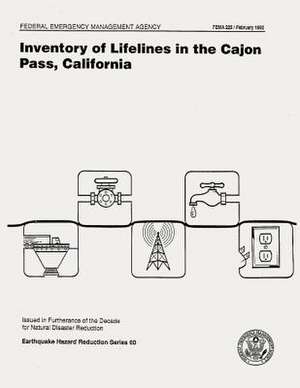Inventory of Lifelines in the Cajon Pass, California (Fema 225)
Autor Federal Emergency Management Agencyen Limba Engleză Paperback
Preț: 136.41 lei
Nou
Puncte Express: 205
Preț estimativ în valută:
26.10€ • 27.33$ • 21.60£
26.10€ • 27.33$ • 21.60£
Carte disponibilă
Livrare economică 17-31 martie
Preluare comenzi: 021 569.72.76
Specificații
ISBN-13: 9781484019559
ISBN-10: 1484019555
Pagini: 104
Dimensiuni: 216 x 280 x 6 mm
Greutate: 0.26 kg
Editura: CREATESPACE
ISBN-10: 1484019555
Pagini: 104
Dimensiuni: 216 x 280 x 6 mm
Greutate: 0.26 kg
Editura: CREATESPACE
